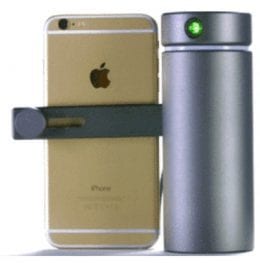Manufacturing in the Age of Consumer-Level 3D Printing

Manufacturing has traditionally required a dedicated infrastructure, production team, and resource management system. These barriers to entry have given businesses near-exclusive control over the type of products available to consumers.
However, with the recent advancements in additive manufacturing, such as affordable 3D printers, consumers are now given the freedom to design and create tangible items from the comfort of their home. With open source Computer-Aided Design (CAD) drawings and cheap mapping software, consumers don’t require an engineering degree to recreate components, extensions, and full-fledged products.
If you don’t keep pace, you’ll be displaced.
Manufacturers can look to other industries as foreshadowing of the digital disruption that is 3D printing: Napster’s disruption of the music industry, Uber’s disruption of the taxi industry, and Netflix’s disruption of the film rental industry are all great examples. Music publishers, taxi companies, and movie rental stores all lacked the foresight to adapt to market advancements and leverage the digital opportunity gap.
The result? Significant losses in revenue and market share. Some businesses exited the market entirely. Don’t be the next Kodak, watching digital photography take over your industry.
It’s up to you to proactively revolutionize the way your manufacturing business functions by leveraging and embracing disruptive technologies. This can be done through creating freedom, loyalty, and trust around your offerings, offering platforms for their customers to invest in and improve with the business.
The Open Source Effect
 3D scanning is becoming commonplace in the realm of 3D printing. The technology is able to use sensors, such as lasers, to map a physical object as a Computer-Aided Design (CAD) drawing to be used by 3D printers. In fact, crowd funding campaigns are already being fulfilled for smartphone-operated solutions, such as the eora 3D High-Precision 3D Scanner, which can laser-scan any object and create a 3D rendering of it on Android and iOS devices with impressive precision and resolution. This rendering can then be used by a 3D printer to recreate the object.
3D scanning is becoming commonplace in the realm of 3D printing. The technology is able to use sensors, such as lasers, to map a physical object as a Computer-Aided Design (CAD) drawing to be used by 3D printers. In fact, crowd funding campaigns are already being fulfilled for smartphone-operated solutions, such as the eora 3D High-Precision 3D Scanner, which can laser-scan any object and create a 3D rendering of it on Android and iOS devices with impressive precision and resolution. This rendering can then be used by a 3D printer to recreate the object.
Manufacturers should take these advancements very seriously. With the proper CAD drawing and print resins, 3D printers are able to replicate a company’s products and components, tearing down long-standing production barriers and putting these capabilities directly in the hands of the end user. With continued advancements in this sector, manufacturers can expect more widespread sharing of their products and components.
Manufacturers need to find ways to combat this potential erosion of revenues. Although there will be inevitable legal battles over reverse-engineered intellectual property (IP), businesses should also spend resources trying to leverage this new technology as a source of revenue.
Building Brand Loyalty & Culture
Brand loyalty is about relationships and true power lies in strong relationships with your customers. From graphic designers who need a fruit symbol on their laptops to ketchup-lovers who only reach for one type of bottle to douse their fries, the strength of your relationships with customers translates to consistent and sustained revenue. It’s something that cannot, and never will be, replicated by technological advancement.
Thus, manufacturers should brand elements that 3D printing tries to mimic, such as the manufacturing process, 3D printing resins, quality assurance, and durability. Branding is an intangible yet highly valuable element that 3D printing cannot recreate. It’s an aspect that your business already has, so leverage it. If your customers trust and value your manufacturing process, they’ll have less confidence in the quality of replicas.
Embracing the Aftermarket Community
Once 3D scans are in the hands of consumers, aftermarket parts will become more prevalent than ever, particularly in mod-friendly industries such as the automotive industry. In these sectors, manufacturers offer a wide variety of components to upgrade and customize their products. Customized or premium parts with original equipment manufacturer (OEM) branding can stand out from open source parts and become another source of revenue.
This approach also opens up the possibility of offering a “Build & Price” product configurator where customers are able to customize the product with their preferred components, creating an elegant buyer’s journey. Embracing the customization of products opens a business to new revenue streams and creates brand loyalty in the process.
Although for many businesses, the highest revenue gains can be seen in selling the actual component or product, some businesses may find success in also selling official CAD drawings of their components as well (perhaps with digital right management (DRM) or usage limitations to avoid pirating and illegal distribution). This will be effective for simple components that can easily be 3D scanned by the consumer.
How Manufacturers Can Add Value
Manufacturers can also leverage their authenticity and encourage sales by offering added value that cannot be recreated by the community. Warranties, loyalty programs, and customer service are all element that should be invested in and promoted.
Warranties
For non-consumables, offering warranties for products instils confidence in a consumer’s buying decision and is clearly something that is lost when customers try open source 3D printing themselves. Businesses can even use extended service warranties as a new revenue model, as well as peace of mind to customers. Customers investing their time and money into new products put a value on warranties and reliability. Products that are guaranteed for a period of time or usage also imparts confidence in the quality of the product.
Loyalty Programs
In 2015, there were 3.3 billion active loyalty program memberships in the United States alone; that’s 29 memberships per household. It’s clear that there is a demand for these programs and a reason for businesses to offer them. Loyalty programs allow businesses to data mine customers, generate a buyer preference, encourage customer endorsements, and enable customers to feel more engaged in a brand. In fact, 34% of Millennials enrolled in a loyalty program best described their participation in the program as “fun”.
Continuous Feedback Loop & Product Advancements
Innovative businesses base their product development decisions on both internal and external forces. Businesses should create a continuous feedback loop through open forums, such as focus groups, customer surveys, and other creative methods.
Kickstarter isn’t just for startups. Crowdfunding can also be used by established SMEs to determine consumer demand; if a product idea is put on Kickstarter and successfully backed by end users, it’s a good indication of the market demand for that product. The business also receives promotional exposure as a bi-product of crowdfunding.
Likewise, social media is a pivotal communication channel for product feedback and recommendations. Track your brand names, product keywords, role models, and competitors to check the pulse of the market and its needs and start your own conversations through Twitter Chats, LinkedIn Groups, and Facebook Pages depending on your market segment.
Prepare for 3D Printing Now
Although 3D printing is still in its infancy, manufacturers need the foresight to anticipate its impact on their business and the industry as a whole. There will always be businesses that resist the trends and happen to succeed; Apple runs a closed system and does so based on the momentum of their brand. Most tech startups that try a similar model fail due to the overwhelming demand for product integration and accessibility.
With all of the technological advancement that is happening around us, the question that businesses should ask themselves is: can you afford to stay stationary in an evolving world? If you’re ready for change, consider taking advantage of funding for innovation, by registering for an Innovation Funding Webinar to learn more about government grants and loans to support your business’ next strategic initiatives and R&D activities.

